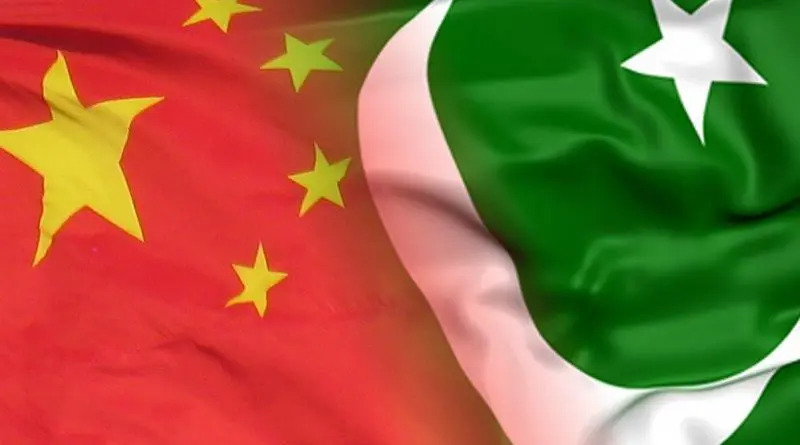Is China Using Pakistan To Gain Support For Its Presence In South China Sea? – OpEd
According to The South China Morning Post in early July, Malaysia’s air force detected Chinese military activities in its territory. According to the article, the Malaysia air force reported the Chinese aircraft were “flying in tactical formation” at up to 27,000 ft (8.2km) and came within 60 nautical miles (110km) of Sarawak, a Malaysian state on the island of Borneo.” According to the Malaysia Foreign Minister, ”Malaysia’s stand is clear – having friendly diplomatic relations with any countries does not mean that we will compromise on our national security […] During this training, the Chinese military aircraft strictly abided by the relevant international law and did not enter the territorial airspace of any other country.”
In the South China Sea history, China has a strong position there. Before entering Malaysia airspace, China also has done the same thing with the Philippines, Indonesia, and Taiwan. This issue has become a global conflict for maritime issues. Besides the US, British also increased its presence. According to the Voice of America, a British-led aircraft carrier group voyage that will take the HMS Queen Elizabeth to the disputed South China Sea would push Beijing further into an angry defensive position. The 65,000-ton aircraft carrier with more than 30 aircraft plans to visit the Asian waterway for military drills with the U.S. Navy and Japanese Maritime Self Defense Forces.
Stephen Nagy, senior associate professor of politics and international studies at International Christian University in Tokyo argues, “I think the Chinese will be upset […] It will reaffirm their view that the United States is now clearly intent on stopping China’s rise and preventing China’s development, but the reality is the U.K. has limited resources it can lend to the region and it’s more symbolic than a tangible increase.”
But, China is not weak as analysts have said. With BRI, China is not only providing a fund for some countries, but gaining support for its claim in the South China Sea.
Pakistan, the South Asia country, is one such example.
Even though Islamabad and China ties have problems such as the debt-trap diplomacy of China, these countries can recover from it. The United Nations Conference Trade and Development’s World Investment Report 2020, indicated that Pakistan’s FDI increased from US$1.7 billion in 2018 to $2.2 billion in 2019. So far, China is the biggest contributor of Pakistan’s FDI though BRI.
Based on an Economist report, former prime minister, Nawaz Sharif, and his business-friendly Pakistan Muslim League, came to power pledging big infrastructure projects and an end to the country’s notorious brownouts. In 2015 the China-Pakistan Economic Corridor (CPEC) was announced, involving promised sums that soon reached $60 billion.
But a couple of analysts said that non-CPEC of Chinese private investment is increasingly driven by cheap labor and securing access to raw materials. China is also building factories in Pakistan to export finished goods directly to European markets. Pakistan’s SOE lost recently hit 1.5 trillion rupee or around US$9.4 billion, more than the country’s annual report for the defence sector.
Muhammad Ishaq, a leading industrialist and former member of the Khyber Pakhtunkhwa Board of Investment and Trade (KPBIT) said, ”In the case of Chinese investment, the local business community was neither consulted nor taken into confidence […] We have serious reservations about the growing Chinese business involvement in Pakistan, which mostly benefits the Chinese side because they run most of the business all by themselves.”
China and Pakistan launched two big hydroelectric power projects costing $1.93 billion. It is a clean investment which will help Pakistan in many ways like cheap electricity, enhanced water storage capacity and availability of water for agriculture during lean periods. Moreover, In 2020, when the entire world was under the grip of the deadly pandemic and economic activities came to a standstill, Pakistan and China joined hands to maintain the pace of work and expand cooperation. The M-4 motorway project was completed during that period. CPEC helped Pakistan to keep 40,000 of its workers engaged.
In late 2020, virtually participating in the 27th Association of ASEAN Regional Forum, Foreign Minister of Pakistan, Shah Mehmoof Qureshi firmly affirmed, “Pakistan’s support for the ongoing negotiations of Code of Conduct and underlined that the concerned parties may find a solution through consensus”.
This statement can be the first gate for Pakistan to support China in the South China Sea. In addition, BRI still exists and will foster economic benefits for acceleration of economic growth. As such, Pakistan will stand with China absolutely.
*M Habib Pashya, Research Assistant, Universitas Islam Indonesia.

